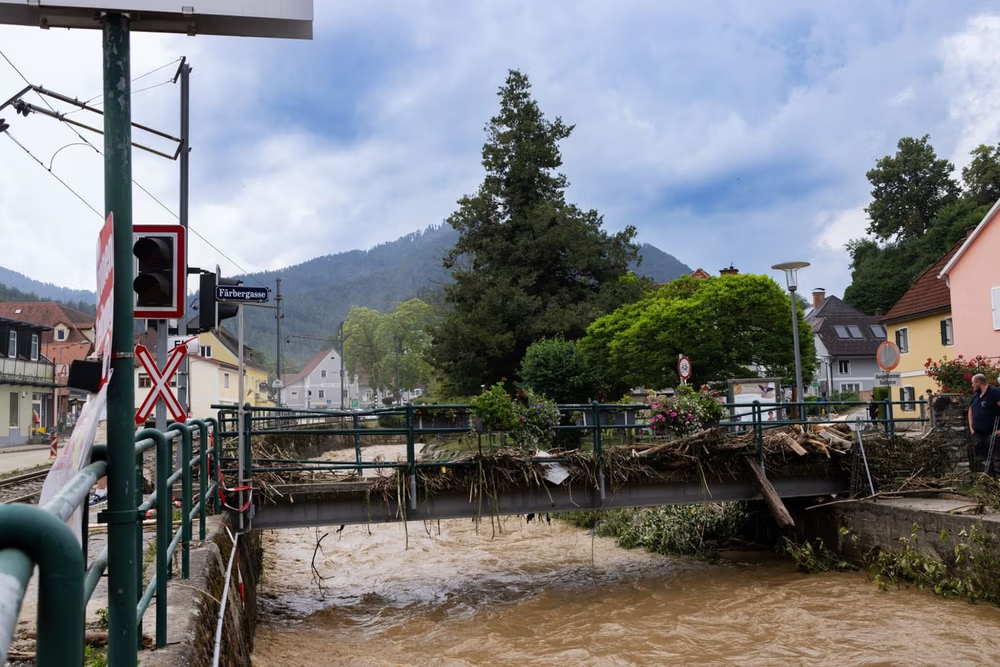Extreme weather events fueled by climate change are taking a growing toll on Austria’s economy, with official figures showing a sharp rise in annual damages, and signs that the worst may be yet to come.
In 2024, Austria faced climate-related losses totaling approximately €1.7 billion, marking a dramatic increase from the roughly €1 billion average seen in recent years. The figures, released by the Austrian Institute for Economic Research (WIFO), underscore a troubling trajectory: climate change is no longer a distant threat, but a mounting economic reality.
What Happened in 2024?
According to WIFO, the majority of the 2024 losses €1.3 billion were the result of devastating autumn floods that struck Austria’s eastern states. These floods inundated homes, businesses, and farmlands, forcing evacuations and triggering major disruptions across sectors ranging from agriculture to transport.
“These were not typical seasonal floods,” said a WIFO analyst. “The frequency and intensity of the storms leading to them are becoming more extreme, clearly aligning with climate models.”
The rest of the damages stemmed from an uptick in summer storms and flash flooding, especially in mountainous regions, which overwhelmed infrastructure and caused repeated insurance claims.
A Pattern of Increasing Losses
While 2024 marked a new high, it fits into a clear upward trend in Austria’s climate-related damages:
- In 2021, storms and floods caused around €900 million in damage, according to federal insurance data.
- By 2022, losses had edged over €1 billion, driven by a series of summer hailstorms and river overflows.
- In 2023, Austria experienced what was then a record-setting year, with €1.2 billion in damages, largely due to intense snowmelt and unseasonable rainfall.
WIFO warns that without serious mitigation and adaptation efforts, annual damages could reach €5.2 billion by 2030, more than five times the long-term average prior to the 2020s.
The Driving Force: Climate Change
Scientists and economists alike point to climate change as the primary cause. Rising global temperatures are increasing the moisture content of the atmosphere, leading to heavier rainfall, more intense storms, and erratic seasonal patterns across Central Europe.
Austria is especially vulnerable due to its alpine terrain, which amplifies the impact of snowmelt and sudden downpours, and dense urban areas, where infrastructure is aging and often unprepared for extreme weather events.
“Climate change isn’t just an environmental issue, it’s an economic one,” said a spokesperson for Austria’s Environment Ministry. “And these costs are being paid by taxpayers, businesses, and insurers alike.”
Who’s Paying the Price?
- Homeowners and farmers have been among the hardest hit, with thousands of insurance claims filed in 2024 alone.
- State and local governments are bearing the burden of disaster relief, cleanup, and infrastructure repair.
- Insurers are increasingly adjusting policies and premiums to account for the rising risk of climate-linked damage.
What Comes Next?
Experts say Austria must act on two fronts:
- Adaptation – Reinforcing flood defenses, upgrading stormwater infrastructure, and building more resilient homes and public facilities.
- Mitigation – Accelerating the transition away from fossil fuels, improving forest and land management, and strengthening early-warning systems.
The federal government has pledged increased investment in climate resilience programs, but critics argue that funding is not keeping pace with the scale of the threat.
As Austria looks ahead, 2024 may be remembered as a tipping point, a year when climate change’s economic costs stopped being theoretical and became undeniable.




